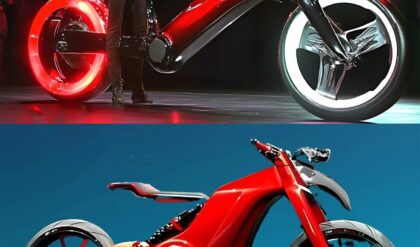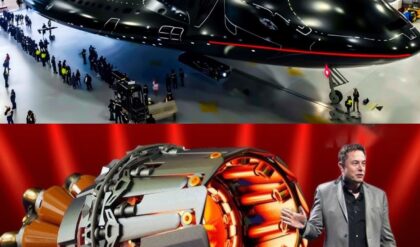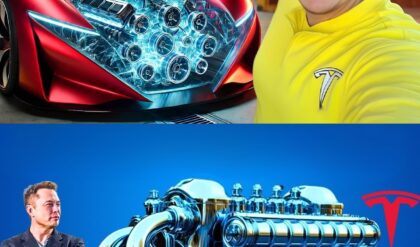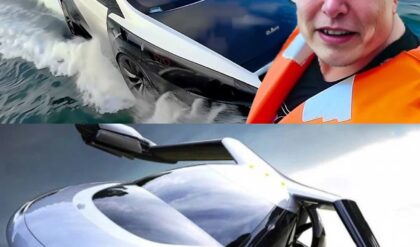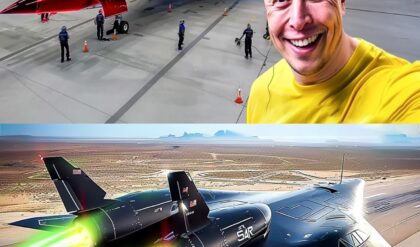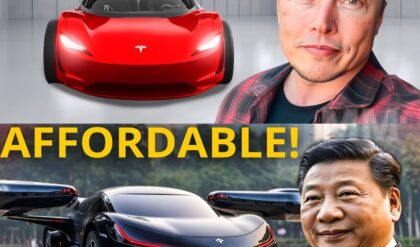Imagine travelling between cities at 1,120 km/h – faster than a Boeing 747. Musk’s Hyperloop is turning this sci-fi dream into reality. This revolutionary transport system proposes to transport passengers through vacuum tubes at speeds exceeding even that of bullets. Musk envisions it as not only faster than airplanes, but also environmentally sustainable, powered by solar panels. With Hyperloop, say goodbye to long waits at airports – it’s fast, demand-free travel. But can Musk make this bold vision a reality, or will it be just another ambitious dream? Let’s explore the origins, challenges, and future potential of Hyperloop.
The vision and origins of the Hyperloop

The plane ride from San Francisco to Los Angeles takes just 35 minutes, faster than a bullet or a jet. It’s not a fantasy, it’s Musk’s vision for the Hyperloop. Known for his groundbreaking collaborations with Tesla and SpaceX, Musk is now redefining transportation.
The Hyperloop concept was first introduced in 2012, when Musk described a system using high-speed pods traveling through vacuum tubes. While the idea may have been dismissed as far-fetched, Musk was serious about it. By 2013, he had published a 57-page open-source document, Hyperloop Alpha , outlining his locations.
Interestingly, the idea of vacuum-based transportation is not new. The concept dates back centuries, with early experiments in the 18th and 19th centuries and the prominent work of rocket scientist Robert Goddard in the early 20th century. Musk’s Hyperloop builds on these ideas, combining them with modern technology to create a futuristic transportation network.
Innovative new concepts: The Hyperloop, a
mystery Unlike traditional air travel, the Hyperloop operates in a vacuum environment, reducing air resistance to zero. Magnetic levitation (Maglev) technology allows the pods to float and glide through tubes, similar to a hovercraft. This dramatically reduces friction, allowing for speeds of up to 700 mph.
The key to innovation is in the design:
Vacuum tubes:
Hyperloop’s sealed tubes eliminate most air resistance, making travel incredibly energy-efficient. Maintaining this vacuum over short distances is a significant technological challenge.
Magnetic propulsion:
Electromagnetic motors propel the pods forward. When accelerated, the pods can coast with minimal energy use.
Sustainability:
Musk envisions the system running entirely on solar power, with solar panels on the tubes to make Hyperloop one of the best transportation options to date.Challenges and obstacles
Despite its promise, the Hyperloop faces substantial challenges:
Cost: Building the necessary infrastructure will cost billions. Musk says Hyperloop could be cheaper than California’s high-speed rail project, but significant investments will be required.
Safety: At 700 mph, safety measures must be foolproof. Fail-safe mechanisms, emergency braking systems, and pressure leak protocols are critical.
Passenger comfort: A smooth, turbulence-free ride is essential to prevent motion sickness and ensure passenger satisfaction.
Regulation: Government approvals, rush procurement, and environmental clearances pose significant hurdles.
Global progress and collaboration
 Hyperloop is no longer just Musk’s dream. Since the open source code was created, teams from all over the world have joined the race to develop it.
Hyperloop is no longer just Musk’s dream. Since the open source code was created, teams from all over the world have joined the race to develop it.
Virginia Hyperloop: Conducted first passenger test in 2020, proving the technology’s viability.
TUM Hyperloop: A team from Germany has set speed records in SpaceX’s Hyperloop competitions.
While these efforts are still far from reaching the 700 mph goal, the progress is encouraging.
Potential Impact: A New Way to Travel
If successful, the Hyperloop could revolutionize transportation:
Environmental benefits: A solar-powered Hyperloop could significantly reduce carbon emissions, especially on routes currently dominated by short-haul flights.
Economic transformation: By dramatically reducing travel times, the Hyperloop could create new opportunities for regional collaboration, increase productivity and redefine commuting.
Coverage: Flexible departures and minimal delays make it a traveler’s dream.
Musk’s Hyperloop represents
more than just a faster way to travel – it’s a vision of a sustainable and integrated future. While there are still challenges to be solved, the progress so far suggests that the Hyperloop is more than a dream. If successful, it could spark a revolution in transportation, making 1,120 km/h vehicles a reality and forever changing the way we move.
What do you think? Could Hyperloop redefine the future of travel? Share your thoughts and stay tuned as this innovative project progresses.
